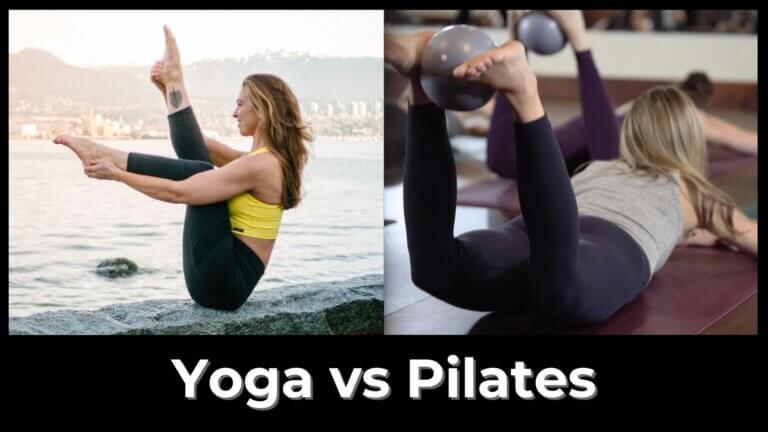
Pilates vs. Yoga : Which Is the True Path to Wellness?
Pilates Pila – Walk into any fitness studio today, and you’ll likely see two classes dominating the schedule: Pilates and yoga. Both promise strength, flexibility, and balance. Both claim to transform not just the body, but also the mind. Yet, when the question arises pilates vs yoga wellness which practice truly holds the key to long-term health and inner balance? For years, enthusiasts and experts have argued the point, each convinced their discipline is the superior path. But the reality is more complex, more nuanced, and more fascinating than the simple comparison suggests.
To dive into pilates vs yoga wellness, it helps to understand where each practice began. Yoga has ancient roots, dating back thousands of years in India. It was originally developed as a spiritual practice that united body, mind, and breath. Over time, yoga expanded into countless styles, from the meditative stillness of Hatha to the sweat-inducing flows of Vinyasa. Pilates, on the other hand, is a modern creation, developed in the early 20th century by Joseph Pilates. Initially designed to rehabilitate soldiers and dancers, Pilates focuses on precise movement, core strength, and alignment. This difference in origins explains much of the contrast between the two.
Read More : Charleston Port Expansion Is Creating Investor Gold Mines
In terms of physical outcomes, pilates vs yoga wellness presents an intriguing comparison. Pilates is often described as the ultimate workout for the core. Every exercise emphasizes stability, posture, and strength. It’s particularly effective for those recovering from injury or looking to prevent one. Yoga, meanwhile, enhances flexibility and full-body awareness. By holding poses and flowing between them, practitioners develop strength while also gaining improved mobility. Both deliver physical benefits, but the emphasis is different—Pilates builds structured strength, while yoga enhances holistic flexibility.
When exploring pilates vs yoga wellness, it’s impossible to ignore the mental aspect. Yoga is deeply tied to mindfulness and meditation. Breathing techniques are central, encouraging practitioners to release stress and cultivate calm. Many describe yoga as a moving meditation, where physical poses serve as vehicles for inner peace. Pilates also requires mental focus, but its emphasis is more on precision and control. Concentrating on small, deliberate movements clears the mind in a different way, often leaving participants with a sense of empowerment and clarity. Both practices support mental health, but their pathways to wellness diverge.
Another key point in the pilates vs yoga wellness conversation is accessibility. Yoga can be practiced with minimal equipment—just a mat and comfortable clothes. It accommodates people of all ages and fitness levels, from beginners to advanced practitioners. Pilates, while also adaptable, often uses specialized equipment such as reformer machines, though mat Pilates is widely available. Those with back pain, posture issues, or rehabilitation needs may find Pilates particularly transformative. Meanwhile, those seeking stress relief, flexibility, and spiritual balance often gravitate toward yoga. In the end, the “better” option depends largely on personal goals.
In the battle of pilates vs yoga wellness, cultural influence plays a surprising role. Yoga has become a global phenomenon, often portrayed as a lifestyle that extends beyond exercise. Its imagery fills social media feeds, retreats span the globe, and its association with holistic living makes it a symbol of modern wellness culture. Pilates, while less flashy, has built a reputation for results-driven fitness. Many professional athletes, dancers, and celebrities swear by Pilates for its ability to sculpt the body and strengthen from within. Both have carved out distinct cultural identities, appealing to different audiences.
Science also weighs in on pilates vs yoga wellness. Numerous studies confirm yoga’s effectiveness in reducing stress, improving flexibility, and lowering blood pressure. It’s often recommended by doctors for anxiety, insomnia, and even heart health. Pilates research highlights its role in improving posture, reducing back pain, and enhancing muscle tone. Rehabilitation specialists regularly prescribe Pilates exercises for recovery and injury prevention. The evidence suggests both practices are effective—but their benefits differ based on the focus of each method.
Perhaps the most exciting perspective in pilates vs yoga wellness is that the two don’t need to compete at all. Increasingly, people are blending the practices to create a balanced routine. Some fitness studios even offer hybrid classes—“PiYo” or “Yogalates” that merge the precision of with the flow and mindfulness of yoga. This combination delivers the best of both worlds: strong core stability, improved flexibility, and a centered mind. For many, it’s not about choosing one over the other, but about embracing both as complementary paths to health.
Looking ahead, the debate of pilates vs yoga wellness will likely continue, but the focus is shifting. As people search for holistic lifestyles that integrate physical fitness, mental clarity, and emotional balance, the line between Pilates and yoga may blur even further. Technology, online classes, and hybrid approaches will keep evolving these practices, making them more accessible worldwide. The growing recognition that wellness is multi-dimensional suggests the true path lies not in choosing one discipline, but in recognizing the unique value of both.
So, when considering pilates vs yoga wellness, which is the true path? The answer may not be absolute. For someone seeking stress relief and spiritual growth, yoga may feel like the obvious choice. For another aiming to strengthen their core or recover from injury, Pilates may be the better path. Both offer transformative experiences that go far beyond simple exercise. The real takeaway is that wellness is personal, and the best path is the one that aligns with your goals, lifestyle, and inner needs.